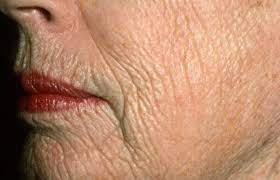Beware of your heart
Although all organic systems can be attacked by serious diseases, the most important general disorders affect the reproductive process of the cells and the complicated and turbulent blood flow. The former gives rise to tumors, so the latter impairs the activity of any organ in the body.

A circulatory disorder may begin a sharp (acute), or very slowly (chronic). These disorders tend to affect a large number of areas of the body: Circulatory disorders of the extremities (arms or legs, sometimes only affecting hands or fingers or toes) are very common, but circulation can also be affected the brain, the myocardium (heart) or other organs of the body.
Among the main symptoms of circulatory disorders are the following:
- Abnormal pulse.
- Fainting
- Dizziness
- Poor healing of wounds.
- Severe headaches.
- Pains in the chest.
The parts of the heart

There are factors such as high blood pressure, smoking or high cholesterol that increase the risk of developing circulatory disorders.
Years ago we observed the effects of high blood pressure in rats, caused by the placement of a staple on the artery of a kidney. This caused an increase in blood pressure as if trying to restore normal blood flow.
Sometimes the person with hypertension experiences similar changes and the walls of their arteries deteriorate. Before discovering the proper treatment for hypertension, almost all those affected by it die in a few years, so he was known as malignant hypertension. In other cases – most – the arterial walls thicken as a reaction to increased pressure. This has no harmful consequences for the patient.
What is blood pressure?
Why is blood pressure malignant and benign for each other? At least, there are two factors involved in the matter;
- First, the severity of excessive blood pressure.
- Second, the time that the patient can bear it. The pressure is usually higher in cases of malignant hypertension and the blood vessels are subjected to less time. This last question is very important; A patient who has sustained a blood pressure of 200/120 for ten years will suffer from benign hypertension, while another, with the same tension for only one month, will present with malignant hypertension. In the first case, the patient’s blood vessels have adapted; In the second, they are badly damaged before they can be adopted.

It is common knowledge that cigarette smoking is associated with the temporary increase in blood pressure in both hypertensive patients and patients with normal levels. In a regular male smoker, myocardial infarction occurs on average 10 years before the non-smoker and if the consumption of cigarettes is greater than 20 daily, this may appear 20 years earlier. In non-smoking women, the infarction usually occurs 10 years later than in men, while in smokers, it appears at a similar age.
Cholesterol is vital for the body, at normal levels, but if it reaches excessive levels begins to lodge in the arteries. This is detrimental and results in that the blood flow loses its natural rhythm and plugging in the veins and arteries occurs. These become clogged, because when there is a high accumulation of cholesterol in the blood, there is occlusion of the lumen of the blood vessel, preventing the blood from flowing normally.
Treatment for circulatory disorders of heart and blood pressure
Treatment for circulatory disorders depend on the causes that have produced them. If it is the case of acute circulatory problems, it is recommended to place for a period of time, the legs in high and to use cold compresses. If spasms occur, the patient should receive medical attention.
To strengthen circulation, you should reduce your consumption of coffee and nicotine. Hot and cold showers (in contrast) stimulate circulation, as does a constant physical activity.






















+ There are no comments
Add yours